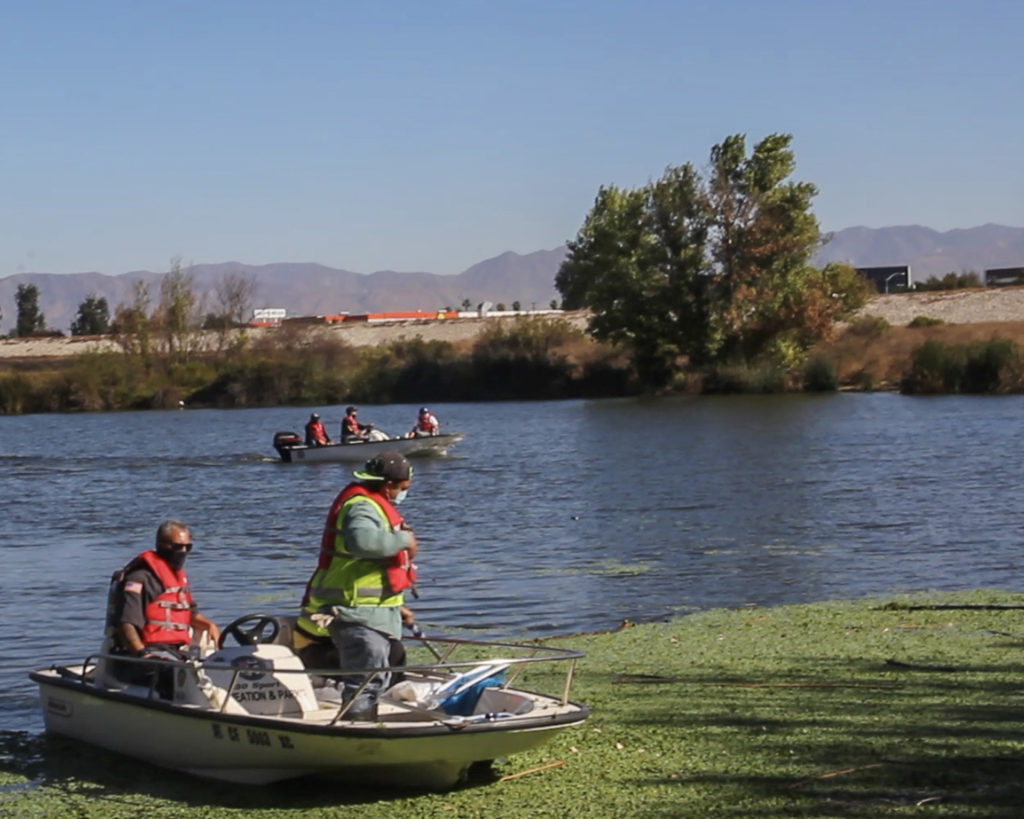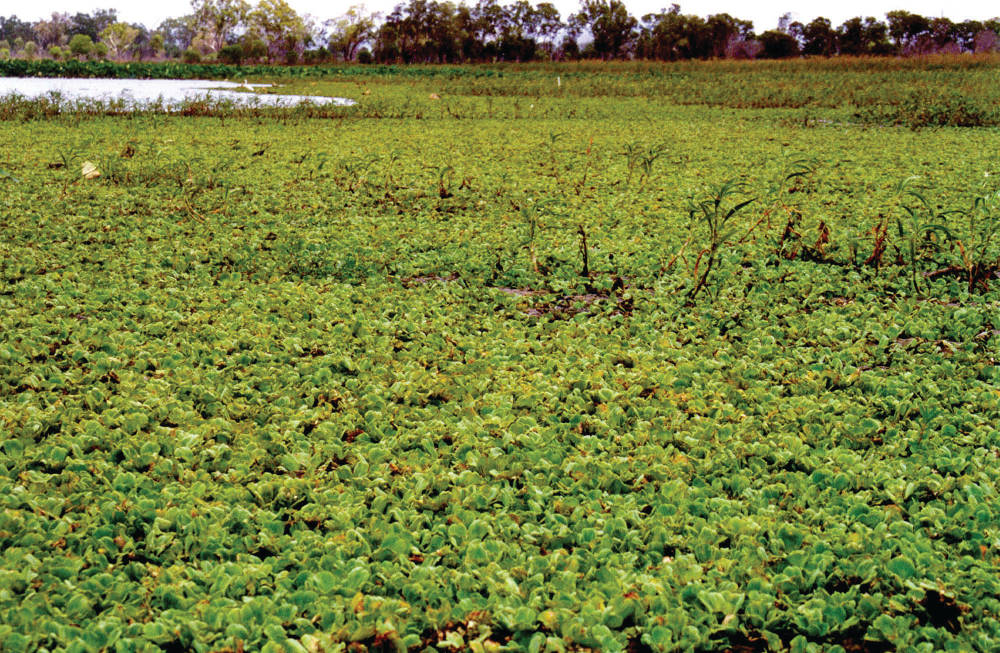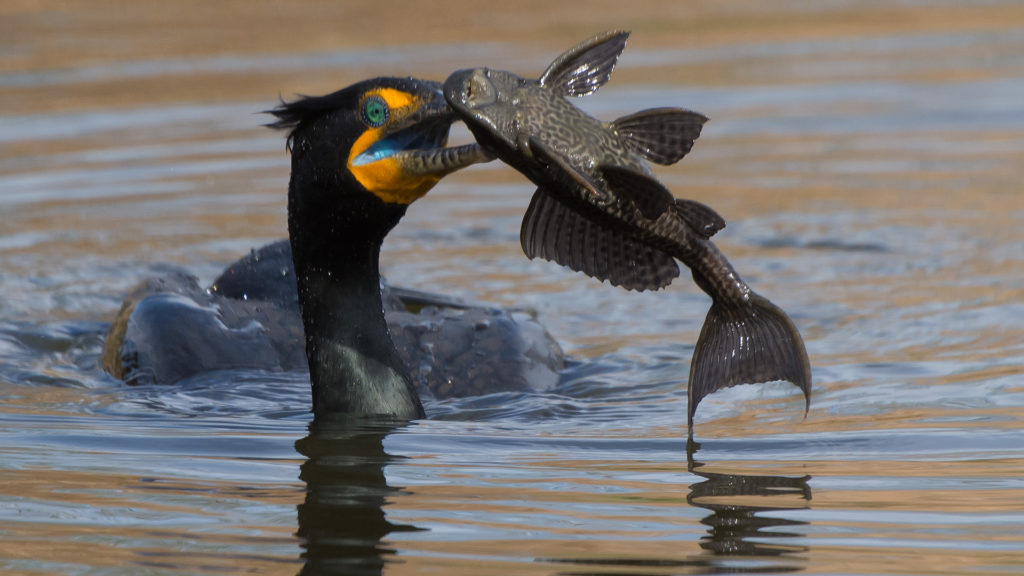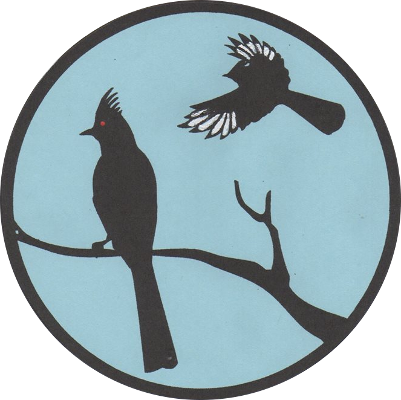Shortly after the recent, devastating fire, oxygen-depleting water lettuce (Pistia stratiotes) was discovered on the surface of the Sepulveda Basin Wildlife Reserve’s lake. San Fernando Valley Audubon reacted swiftly: our volunteers went to work scooping out as much of the fast-spreading plant as they could, working from the shore with nets and rakes. We were not allowed out on the lake, and were rapidly losing ground.

Fortunately, the big guns at Los Angeles City’s Department of Recreation and Parks (RAP) were not far behind. Quickly recognizing the threat, not only to the lake but potentially to everything downstream — i.e. Los Angeles River as it wends its way to the ocean — RAP showed up with men, boats and equipment.
For now, our volunteers can stand down. Thanks to RAP’s timely and energetic work, the weed has been beaten back. Hopefully, a lesser degree of vigilance and mitigation will keep it that way.
The problem with invasive plants like water lettuce is how quickly they spread and how little it takes to start a disastrous invasion. In this case, a discarded home aquarium was found by the lake and was likely the source of the (illegal) introduction.

Water lettuce was first described along the Nile River around 2,000 years ago. References to the plant were made in both Egyptian hieroglyphics and the writings of Ancient Greek botanists. Water lettuce has been found in bogs, lakes, and marshes of every continent except Antarctica. It is not high on the edibles list, but is edible after cooking, usually boiling. In times of famine it has been consumed in India, China and Africa. Water lettuce is not happy until it covers every available square inch of surface and therefore must be vigorously controlled. Its sale is regulated in California and introducing it into a lake or other public water source is illegal.
Water lettuce is popular for use in water gardens because its presence inhibits the growth of algae and cleans the water. It has even been shown to remove heavy metal toxins like zinc and cadmium from a water supply. Aquarium enthusiasts occasionally propagate it as an attractive addition to their tank.

HOWEVER — as pretty as water lettuce is, if it covers too much of a water feature — be it lake, pond or aquarium — all the oxygen will be sucked out and sunlight blocked, with deadly results to anything living in the water. The SBWR lake supports a fish population that is an important food source for resident and migrating birds, something we can’t afford to lose.
Happily, water lettuce is tropical in origin and does not fare well in cold winters. RAP will actively manage the lettuce through November and resume next March or whenever it is seen to be spreading again. We will again ask for volunteers to remove it if and when necessary. Whether the water lettuce returns or not, it’s comforting to know that the City stands with us in protecting the lake and thereby the wildlife that depends on it for sustenance.
